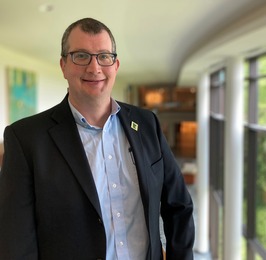|
Public Health
System Transformation Update
A monthly update from the Joint Leadership Team sharing how, together, we're creating a seamless, responsive, publicly-supported public health system in Minnesota

|
|
|
View this as a webpage
When we think of what it means to “transform” Minnesota’s public health system, we each picture what that means to us and our communities, along with our specific part in it and how our work fits into the whole.
As a Joint Leadership Team, when we picture a transformed public health system, we envision a seamless, responsive, publicly-supported public health system that works closely with the community to ensure healthy, safe, and vibrant communities. This system of state, local, and tribal health departments will help Minnesotans be healthy regardless of where they live.
We heard you ask for more consistent and transparent communication about Minnesota’s work to transform, strengthen, and update the governmental public health system, and we understand. We all do better when we know who’s at the table, what’s going on at any given time, and where we’re headed together in the future.
This regular newsletter is one part of a more transparent communication strategy from the Joint Leadership Team. In the future, the Joint Leadership Team will also share more and different updates, including an FAQ of your frequently asked questions.
If you’d like to reach out to the Joint Leadership Team at any time, we’d love to hear from you. Please read on to learn how we’re all working together to update our public health system to be more seamless, responsive, and publicly-supported.
Thank you!
— The Joint Leadership Team for Public Health System Transformation in Minnesota

|
|
What does system transformation mean to you?
Thoughts from Nick Kelley of Bloomington Public Health

When I was growing up, my dad was a nurse and my mom taught special education, and we would often hear stories of our family’s history of public service. I grew up with a love of history and a fascination for infectious disease, figuring I would be an infectious disease doctor.
While in college, an alum visited campus for a Nobel Peace Prize forum; hearing Mike Osterholm talk about public health opened my eyes to this work as a vocation. After grad school at the University of Minnesota, starting my career here, and then navigating through the COVID-19 pandemic with incredible colleagues, I see how important a strong public health system is, especially when I consider other states in which I’ve lived and worked.
I long for the day I don’t have to give a caveat when I talk about how Minnesota is one of the healthiest states—that it’s a healthy state if you’re someone like me, a white male who’s gone as far as I can in education (a terminal degree). Minnesota should be the healthiest state for everyone, but we can’t do that without transforming our public health system. That transformation will require sharing power and resources and changing how we do the work of public health.
What thrills me about system transformation work is our effort to keep Minnesota as the North Star for public health—but, again, it’s a North Star for some and not for others, and that’s not acceptable.
Transforming the public health system can help us address the structural issues that undermine our current system as it was designed: building partnerships we need to reduce health disparities, meeting the realities of the 21st century, and recognizing all of the partners that make up our public health system in Minnesota. I’m thrilled I get to play a small part in changing that system to be a more true North Star.
But it’s not just about me—my “why” is in my kids. My oldest, a fourth-grader, has asked some really hard questions about the differences he saw in how his classmates made it through the pandemic and how COVID-19 impacted them. He doesn’t understand why these differences exist. I’m glad we can talk about it, but I wish there weren’t structural barriers causing these differences.
I think transforming the public health system can help change that—so my kids won’t have to have those conversations with their kids, and so we radically change health outcomes and transform not only our system but also the health of Minnesotans.
Transforming the public health system is hard work, but it’s the best kind of hard work, and so necessary.
|
Nick Kelley has worked with Bloomington Public Health since 2015 and is currently the city's Public Health Administrator. Nick serves on the Joint Leadership Team as a representative of the Local Public Health Association. His favorite place to be in Minnesota is Target Field in any season, but especially when he can share postseason magic with his son (regardless of whether the Twins win).
|
|
What is the Joint Leadership Team?
The Joint Leadership Team envisions a seamless, responsive, publicly-supported public health system that works closely with the community to ensure healthy, safe, and vibrant communities. This system of state, local, and tribal health departments will help Minnesotans be healthy regardless of where they live.
This work of strengthening, updating, and transforming the public health system is not led by one single organization. Our inter-governmental relationships are key to making the public health system work. Three groups in Minnesota work together collaboratively, sharing leadership to guide the work of transforming the state’s public health system.
This Joint Leadership Team consists of people from SCHSAC (State Community Health Services Advisory Committee), LPHA (Local Public Health Association of Minnesota), and MDH (Minnesota Department of Health). All three groups are represented at every meeting; the team has met twice per month since 2022 and meetings are led by an independent facilitator.
Outside of meetings, workgroups made up of public health partners (sometimes along with contractors), assess, explore, plan, and execute, laying the tracks for what system transformation means in practice. In parallel, tribal nations we share geography with also consider how to strengthen their own public health infrastructure, as sovereign nations with their own authority, and we continue to communicate and learn from each other.
Joint Leadership Team members
Local public health staff and leadership:
- Nick Kelley (City of Bloomington), LPHA Chair
- Kari Oldfield, LPHA Director
- Maggie Rothstein (Aitkin-Itasca-Koochiching Community Health Board), Immediate Past LPHA Chair
- Amy Westbrook (St. Louis County), LPHA Chair-Elect
MDH staff and leadership:
- Brooke Cunningham, Commissioner of Health
- Chelsie Huntley, Director, MDH Community Health Division
- Kim Milbrath, Section Manager, MDH Center for Public Health Practice
- Maria Sarabia, Assistant Commissioner, MDH Health Improvement Bureau
- Halkeno Tura, Assistant Commissioner, MDH Health Equity Bureau
SCHSAC members and alternates:
- Tarryl Clark (Stearns), SCHSAC Chair
- Sheila Kiscaden (Olmsted), Immediate Past SCHSAC Chair
- De Malterer (Le Sueur-Waseca), SCHSAC Chair-Elect
Learn more: Joint Leadership Team and Subgroups
|
|
Do you see examples of a seamless, responsive, publicly-supported public health system in your community? Let us know! |
|
|
There are SO many things happening across the state that help move us toward a public health system that’s more seamless, responsive, and publicly-supported.
The Minnesota Infrastructure Fund is supporting a second round of locally-led, two-year innovation projects
Current and future locally-led innovation projects are testing new ways of doing foundational public health work that could be used across the state—locally, regionally, or statewide.
Learn more: Innovation Projects (Infrastructure Fund)
An environmental scan of our public health system and its policies will help shed light on current and future activities
To see where to go next, we have to know where we are. This environmental scan of our public health system and its policies maps out the relationships, information, power, and other factors that help and hinder our public health work in Minnesota. Many of you have participated in interviews to share your view of the system and how you see it working—thank you!
This work is conducted by consultants and advised by a Joint Leadership Team workgroup.
Community health boards are growing their ability to do foundational work, with funding dedicated specifically to foundational public health responsibilities
This non-competitive funding is a down payment on Minnesota’s public health system, and helps make sure that all of the state’s health departments can build capacity to do foundational work. This helps strengthen the entire system by filling in the missing pieces of what we’ve often called Minnesota’s “patchwork quilt” of system-wide public health capacity.
Learn more: Funding for Foundational Public Health Responsibilities
Work to strengthen tribal public health moves in parallel to state and local activities
As sovereign nations with their own public health authority, many of the tribal nations Minnesota shares geography with are also assessing their public health infrastructure against national standards, and considering what it looks like to strengthen their work and build capacity to meet their needs.
Indigenous consultants conduct this work alongside MDH staff.
|
|
Contact a specific member of the Joint Leadership Team
Based on the collaborative nature of this work, please direct any questions or feedback to one of the following.
-
Local public health staff and leadership: Please contact your LPHA representatives currently serving on the joint leadership team.
-
MDH staff and leadership: Please contact the MDH staff currently serving on the joint leadership team.
-
SCHSAC members and alternates: Please contact the SCHSAC representatives currently serving on the joint leadership team.
General questions
For general questions, including about funding, grants, and eligible activities: Please contact the MDH Center for Public Health Practice at health.ophp@state.mn.us.
Not sure who to contact?
Visit: Ask a Question: Transforming the Public Health System in Minnesota
Joint Leadership Team members review these questions on a regular basis and respond as needed or requested.
|
|
|
|
|